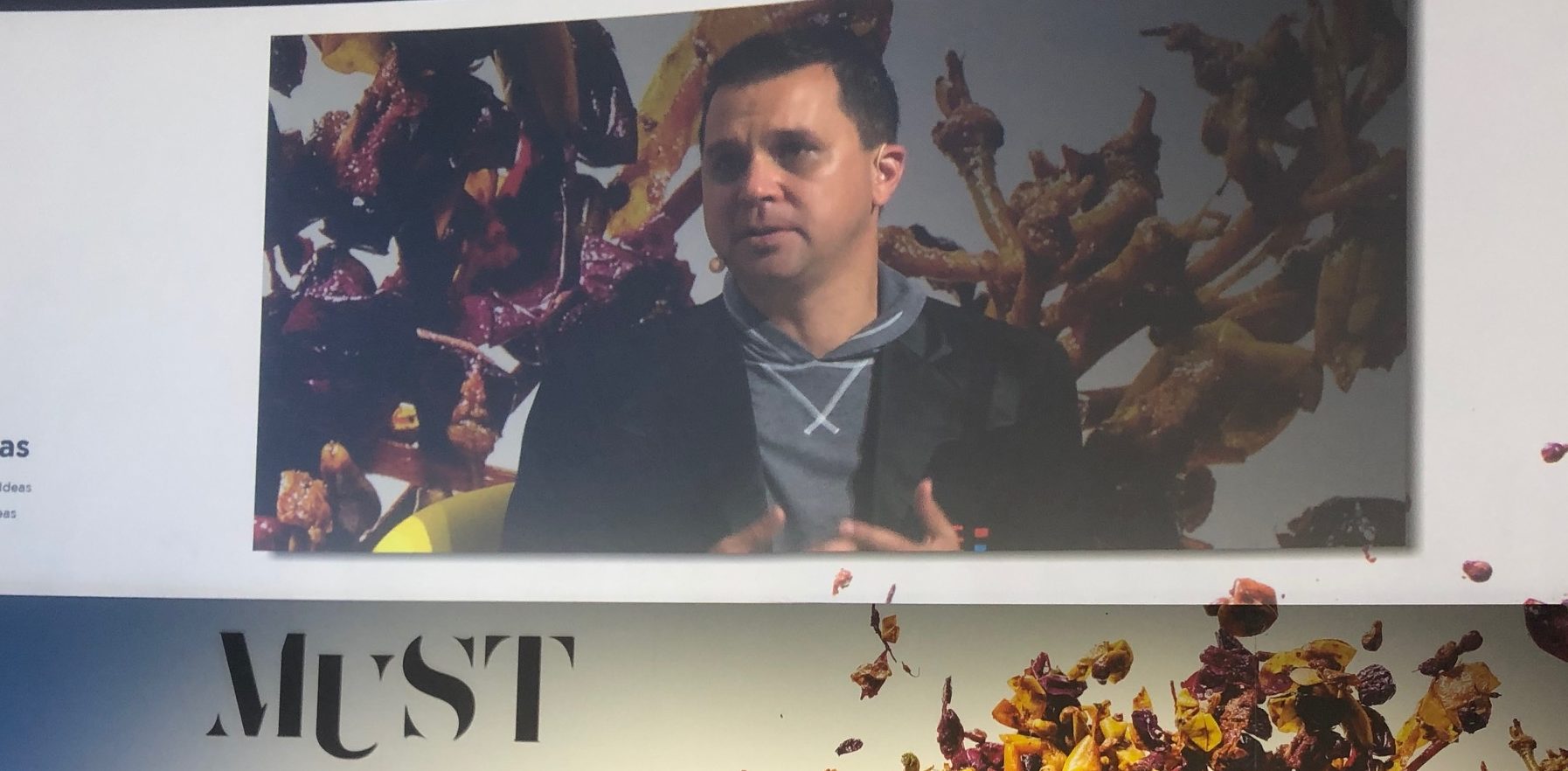Richard Siddle had a ringside seat to hear Emetry’s Paul Mabray set out the path for wine businesses to follow if they want to pick their way through to consumers and understand what really matters to them.
The wine industry has a fundamental problem. For no matter how hard we all collectively talk about, and make and share stories about wine and its genius winemakers and idyllic wine regions all over the world, it all boils down to one thing. Most consumers don’t care about wine.
At least they “don’t care as much as we want them to,” is how Paul Mabray started his whistle stop, rollercoaster talk at the MUST Fermenting Ideas conference earlier in the summer.
What’s more, said Mabray, we are having to work so much harder just to be heard in what is the most “competitive consumer market there has ever been”. “Wine is just part of a communal exercise,” he says. It’s what we drink when we are out with friends. Simple as that.
Not only don’t most people care about wine, they are staring to care a lot more about other things. Like not drinking wine at all. The rise of the teetotaller is not a fad, it’s real, he stressed. More people are choosing to cut down on what they drink, or, increasingly are not drinking at all.

We live in very different times when it comes to how even our world leaders choose to communicate direct to consumers says Paul Mabray
What people care about
In the US they are also caring a lot more what they can do with cannabis. Or as Mabray calls it the “big green monster”. Particularly the legal edible cannabis market which is really starting to make an impact.
Then there is the other “monster” on the high street. Amazon. It has been dipping its toes in and out of alcohol and wine for years and it’s surely only a matter of time before it works out what is the right model for it to go for, warned Mabray.
“Market places eat markets,” he added. Even when you think you have built a successful trading model, new players and competitors will come in and change the rules.
Like the cellar door market in California. For decades this has been the cash cow that kept on giving with a never ending stream of people willing to travel up and down the state visiting wineries and buying up the majority of their wine. But you can have too much of a good thing.
“Cellar door traffic in Napa is going down because there is so much competition and traffic. It means people can only effectively get to one or two wineries in a day. They are also going there to drink. Not to spit. They are swallowing up all the wallet share. They get a great experience and spend all their money. So it’s good for the winery they go to, but it is not good for the valley as a whole,” said Mabray. “We have a beautiful region, but it is a terrible business model. We expect people to come to our winery and then ship wine to their house.”
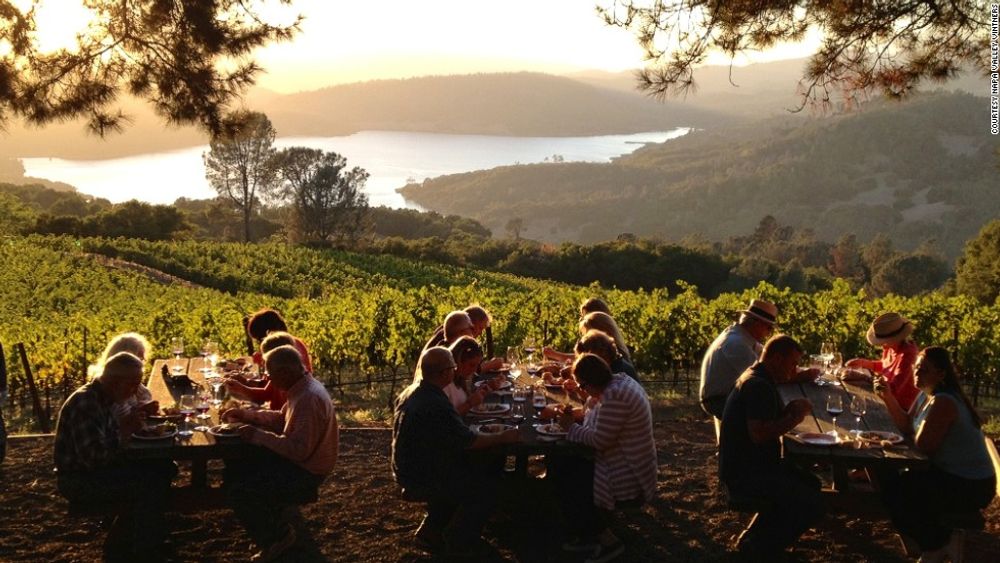
The cellar door market in California is becoming less about the wine per se and more about drinking and having fun
“Scores are also not the answer,” added. “They don’t change the market like they used to.”
Instead the consumer is faced with an ever more confusing wall of wine, full of noise and claims for different styles of wine, be it natural, biodynamic, organic, through to wines infused with baijiu.
“All of which does not make you want to buy wine. There is just too much choice and it is confusing,” he claimed.
Feel the force
Instead we need to strip everything back to what really matters to consumers and what they want to buy. It’s what Mabray calls the “Star Wars factor”. How we too can “feel the force”. Star Was, he said, was and still is phenomenally successful as it is all about “creating human connection” in its story telling. It makes you care deeply about the characters.
“We need to evolve and change,” said Mabray. We need to wake up to the fact we live smack, bang in the middle of a digital society. To succeed in this world we all have to think digital first be it excelling at online search, social media or e-commerce. Or all three.
In the 1900s it was all about what you could make and manufacturers were the king makers. Then in the 1960s it moved to distribution and getting the right products to the right people. The 1990s was the age of information and growth in computers and the internet and now we are in what Mabray calls the age of the “customer” where the consumer is empowered, and holds all the buying power.

That fundamentally is the massive change that the wine industry is yet to catch up with.
Whilst the wine industry is still 100% focused on just telling the story about how the wine is made and where it comes from, the consumer sees that as the staring point. To really engage they want to connect with a wine with content and information that is meaningful, timely, relevant and personal.
“The customer is the centre of the universe now,” said Mabray. “The internet has flattened the playing field and brought us closer tougher and yet further apart at the same time.”
The opportunities are now there for any business or brand, large or small, to engage and connect with their target customer base.
“We live in the experience economy,” added Mabray. “We all love experiences. They are our ‘like’ dollars.
“We also live in a subscription economy. From Netlfix to Amazon. Wine clubs were one of the first subscription models to work. But they have not changed since they started in the 1970s. How do we get better and get closer to consumers?”
Digitally ready
It means digitally marketing to consumers based specifically on the goods or services they have shown an interest in or have purchased in the past. It means talking to them at a time and place of their choosing in the channel they prefer. All with the intention of converting them into engaged, loyal consumers, said Mabray.
Using and analysing data is similar to listening, is very much how Mabray, and his business Emetry look at making a difference. “Good data collection and analysis can tell you everything a customer wants from you, given their journey with your brand. A single customer record can tell you where they live, how much they purchase, what they purchase, where they purchase, and how they found you. How you communicate to these customers should be just as detailed,” he explains.
Going direct

Digitally native brands like AllBirds – the self-dubbed “world’s most comfortable shoe” are disrupting the traditional route to market by going direct to consumer
But if you look close enough there are plenty of examples of brands doing just that. There’s just not many in wine.
“Just look at digital native, vertical brands [like Harry’s Razors or Allbirds shoes]. I love them. They are all about the customer and getting the subscription loop right. They have nailed digital connectivity. They really want to know their customer and understand thecustomer is key.”
The opportunity is there for wine brands and businesses to do the same and use what Mabray calls the “digital feedback loop” to keep on top of and ahead of what their target customer might want.
“We have no idea who is picking up wine in a supermarket or restaurant. But these digitally connected brands do,” he said. “Why? Because they care about customer experience more than anything else.”
He asked the MUST audience how many people had actually shopped their own website and tried to buy and order goods. “Now try and do that on your mobile phone in an area with bad wifi.”
“These brands succeed because they care about everything and how a consumer buys their products.”
And that even means looking at how the product is packaged and delivered. That’s key, stressed Mabray.
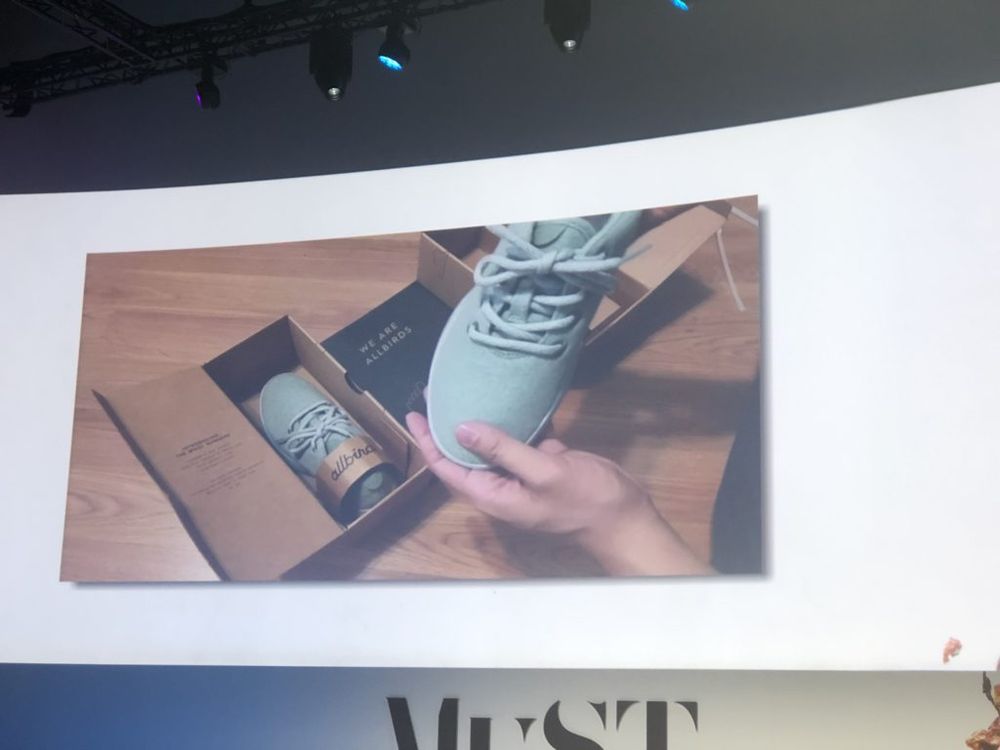
When selling direct to consumer how the product arrives and how you open the box and unwrap is a key part of the experience, says Mabray
“It’s part of the experience. The unboxing experience. There is a whole area on YouTube just on ‘unboxing’. It’s a thing. You have to understand how these brands are working, like Allbirds, which offers multiples types of just one shoe design. They test and map the customer journey. The web dictates everything they do.”
Mabray gave a number of examples of digitally native brands that work well online. Like the Dollar Shave Club that was one of the first to really crack direct to consumer and was bought by Unilever for $1bn for doing so well.
“Just look at how they work and send you through their website. They are incredibly good at story telling.”
Wine is failing big time by comparison. “In the wine industry we are all the same. We are all family owned, sustainable and organic. Our stories have to be different.”
Follow the leaders
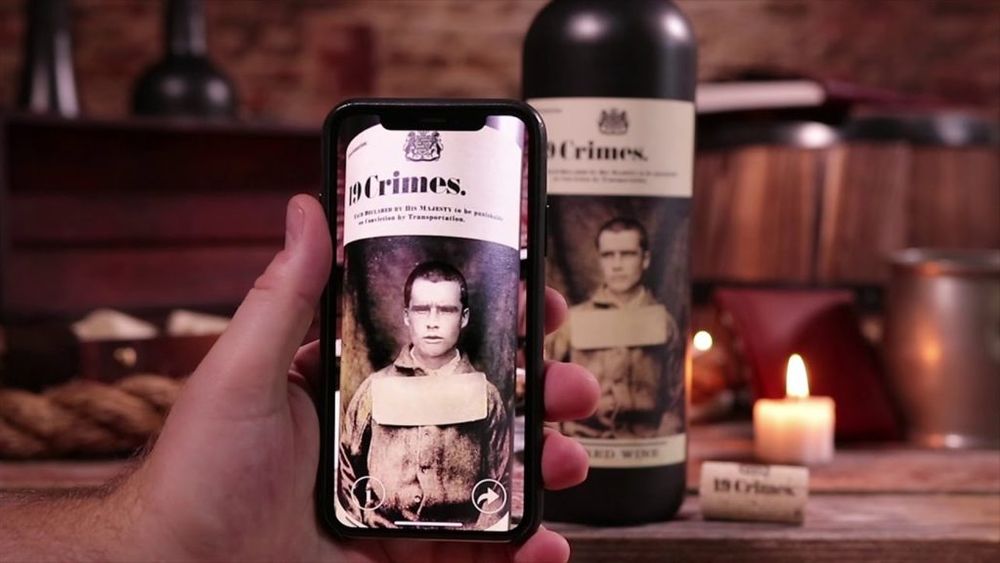
The impact 19 Crimes has had on the branded wine market is one all wine companies should wake up to
But there are exceptions. Mabray looked at the success of 19 Crimes, the Treasury Wine Estates’ brand that uses augmented reality to bring to life and tell the stories of the prisoners on the label. It is succeeding, said Mabray, at the point of purchase. It also looking to learn from how people are using the bottles, which labels they scan, and use that data to make better, more interactive products in the future.
“Experiences unlock dollars. These wines are not just for young people. We all love experiences,” he said.
But in the main “we are stunted by technology in the wine industry,” said Mabray. Look at email. So many wine companies use email to sell and market wine to their signed up customer base, but how many actually use email to test, learn and make their offer and pricing better?
What you need to know
These, for example, are the questions that Emetry asks its customers when trying to improve their email marketing: “What if you were able to know which of your e-commerce purchasers only buy Chardonnay, and of those who will only purchase if given a discount or only buy when shipping is included? Would you still send a generic email offer risking email fatigue or personalise your message to these groups?”
“What if you knew in almost real-time when a customer visited your website and tasting room and made three consecutive purchases in 45-days making them your number one customer? Or worse, what if you didn’t know?
By analysing customer data, you can customise the person’s experience to their individual needs and desires based on in-depth information and insights about them, said Mabray. This leads to opportunities for increased revenue and customer retention.
“Digitally native brands can monitor your mouse pad and when they see you about to leave their site, they will do things to keep you on the site.”
When you consider it costs around $75 to $150 to acquire a wine customer online it makes sense to get it right, so they come back.
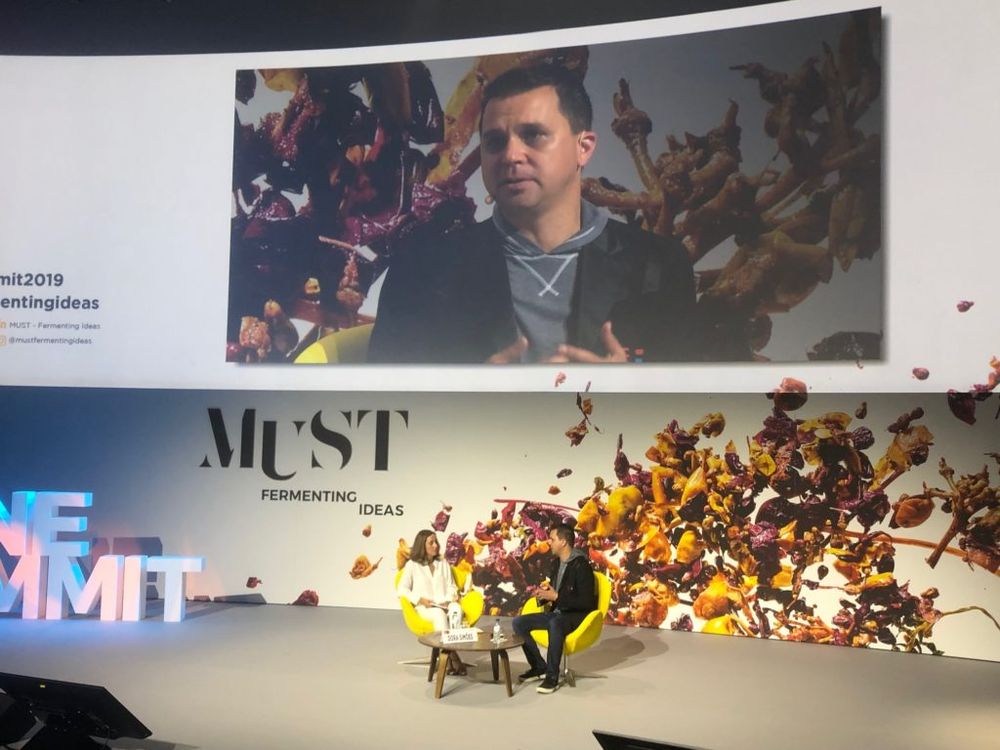
Paul Mabray being interviewed at MUST Fermenting Ideas conference earlier in the summer
Compelling offer
“We don’t give a compelling offer. Wine in itself is not a compelling offer. Not enough people are interested. The biggest challenge is to get someone to come and buy wine without any reviews or a story about the wine. We have not been able to do that with wine. It’s all too similar,” said Mabray.
As a result wine is much further behind on retaining customers online than digitally native brands.
“How many wineries have gifting as part of their marketing? Almost none, but we all love to gift wine. Instead wineries have invested in tasting rooms and spent their money there. But we need to look again.”
Crucially there are no set ways to succeed when it comes to online. The most important thing is to give it a go, said Mabray.
“Test, fail and move forward. You have to invest in change and not just be re-active,” he stressed.
